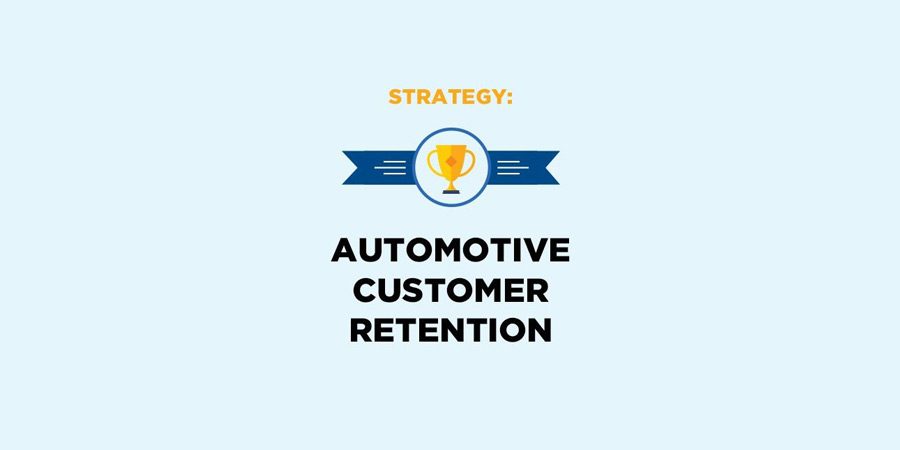Automotive Customer Retention Strategy (Infographic)
 Customer retention is a hot topic in the retail automotive industry as more and more businesses seek to move away from transactional, one-time business practices and focuson developing new ways to attract new customers and retain them.
Customer retention is a hot topic in the retail automotive industry as more and more businesses seek to move away from transactional, one-time business practices and focuson developing new ways to attract new customers and retain them.
This focus on long-term growth is defining the future of automotive loyalty.
The infographic below comparesthe stark differences between the traditionalapproach of customer acquisition (such as direct mail, email marketing, T.V., radio and online advertising) versus themodern approach of customer retention (such asa Complimentary Maintenance Program).
Based on the model below, which automotive marketing strategy doesyour dealership most closely relate to?

If you find your dealershiprelating more to conquest marketing tactics, you’re not alone. And you’re not far off from implementing a retention strategy that will help you make money in both the short-term and the long-term.
Many dealers claim they don’t make money on oil changes.That may be the case right now, but the truth is, you can and should be making money on routine maintenance visits.
It all boils down to this:
Customer retention begins in the service department.
Oil changes may not bring in the kind of money you’re looking for right now, but it’s a small step in the right direction. Routine maintenance visits area gateway to higher profitability in the near future.
Think about it:
The average trade-in and repurchase cycle is between 48-72 months (sometimes even longer) — that’san awful long time to go without seeing and interacting with your customers.What are the chances of a customer returning to your dealership if they haven’t had any interaction with you in four to six years?
You’ve heardthe saying “out of sight, out of mind” and that same principleapplies to dealership businesses too.
Where your customer returns for service is where they will return to repurchase.
So why leave it up to chance whether or not your customers return to youor a competitor?
A maintenance-included strategy is simple. It gives EVERYcustomer a reason to return to the issuingdealership for serviceand provides an opportunity for the dealership to make some money in service until it’s time for vehicle trade-in and repurchase.It’s a win-win solution.
Here’s how it works:
There arethree phases of automotive customer loyalty.
- Phase 1 (12-24 months):Complimentary Maintenance is included on every vehiclepurchaseso customers don’t have to pay out-of-pocket for routine maintenance visits.This gives customers incentive to return to the issuing dealership foroil changes, tire rotations and multi-point inspections.
- Phase 2 (24-48 months):By giving customers a reason to return for the first 2-3 visits, service departments will have a larger customer base and more opportunities to interact and offer additional service upsells. That way, when more expensive repairs pop up, customers are conditionedto return to the dealership they already know and trust. This is the stage wherethe dealership will see ROI in higher CP/RO spend on service loyal customers who now return for the full-line of maintenance.
- Phase 3 (48-72 months):Once customers have built a loyal service relationship with the issuing dealershipfor 3+ years of vehicle ownership, they’re more than twice as likely to return for vehicle trade-in and repurchase. When customers get to this life cyclestage, it provides a great opportunity for thedealership. While customers are sitting in thewaiting room during a service appointment, it’s the prime time tooffer a no-obligation test drive of a newer vehicle model to move customerstoward making their next purchase.
The best part?
A maintenance-included strategy is a natural progression of retention that doesn’t require the additional cost of conquest marketing tactics.
If you notice, service coupons and conquest marketing tactics aren’t mentioned in any of the three phases of a service retention strategy — they aren’t needed. So if you’re tired of spending money eachmonth to compete for the same customers in your town, you can cut those costs.
That means, with a Complimentary Maintenance customer retention strategy in place, you can stop sending direct mail campaigns to advertise a 1-time service couponandreallocate that money to focus onretention.
So where can you start?
The first and most important step of customer retention for auto dealerships is to reevaluate service department pay plans.
It’s crucial to understand that asuccessful dealershipretention strategy strongly relies on the foundational supportof service department pay plans. Before implementing a Complimentary Maintenance Program, dealersshould review their existingpay plan strategies and make changes that align with new serviceretention goals.
If your dealership is still using legacy pay plans that support upsells and longer RO visits, then you’re training staff to treatoil changes and routine maintenanceas a penalty instead of a reward.
In order to receive the retention results you want, this is a step you don’t want to miss. Refer tothis article to learn how creatinga customer-centric pay plan supports customer retention and helpsemployees feel valued.


